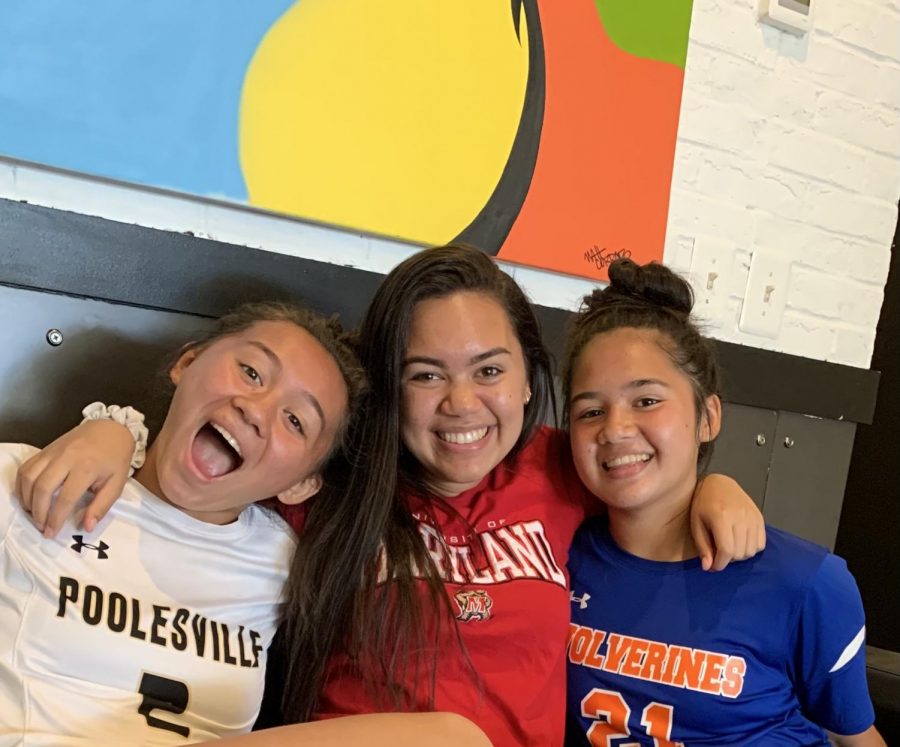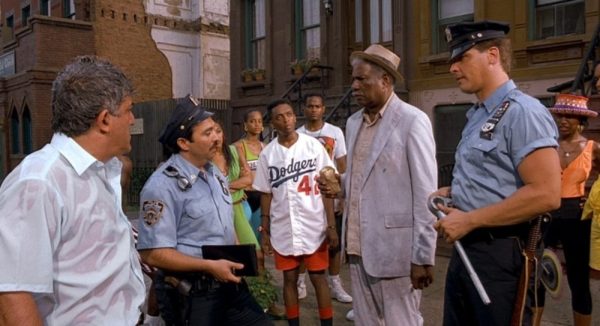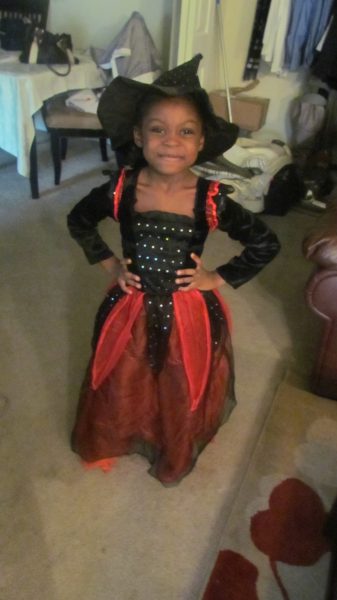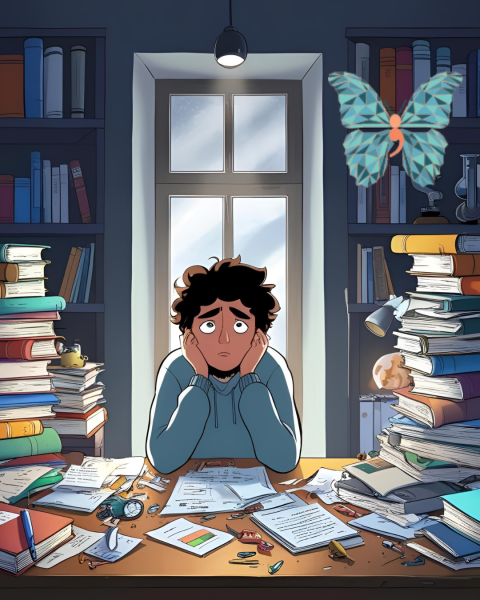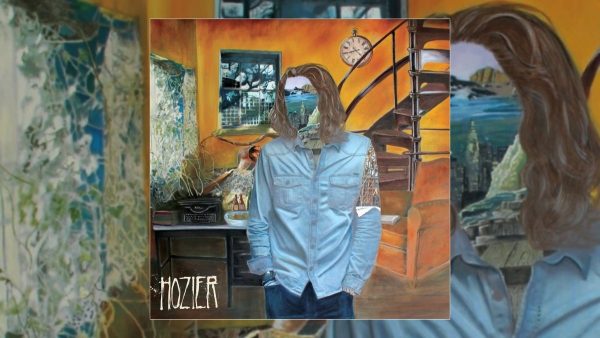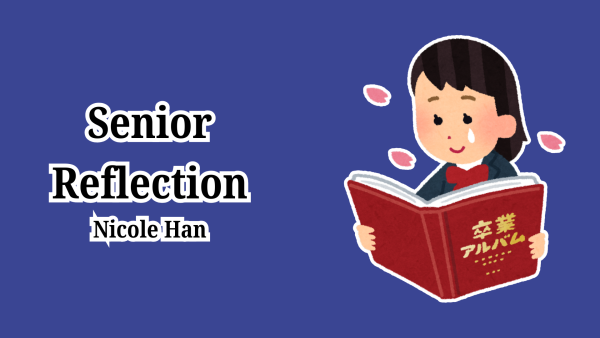50 percent plus 50 percent doesn’t equal 100 when it comes to race
AJ Gordon (far right) with her two sisters, Alicia (middle), and Abby (left), none of whom turned out to be entirely one race.
I’m not going to bore you by retelling my identity crisis. It happened. It’s done. Now it’s time to exploit it for scholarship money.
But a lot of what I experienced taught me about the way heritage and culture are perceived and why it’s confusing for kids with any cross-cultural experience.
If being half-white and half-Filipino did anything (besides confuse me), is it made me particularly observant of how Filipinos perceive their own culture. Because I felt disconnected from my heritage, I grew up scrutinizing how my Filipino friends and family expressed their Filipino identity so that I could imitate it.
Some of my Filipino peers seemed to identify as Asian more than others. In particular, they would use East Asian symbolism to express their “Asianness” despite many of the symbols seeming unrepresentative of Filipino culture.
Other Filipinos I knew, particularly those surrounded by a Latino community, would highlight the attributes of their culture that were most similar to Latin American values and traditions. They were more prone to pointing out the foods, language similarities, and values that the two cultures share.
Because of my appearance, I am often assumed to be a part of the Latino community. To counter this, I forcefully identified as Asian growing up. The most vivid example I can think of is feeling the need to learn how to use chopsticks well, although Filipinos eat with spoons.
But Filipino people can view their own culture in vastly different lights. What factors into this? Why do people of the same racial makeup and heritage identify differently?
Who you relate to, who you feel represented by, what you are recognized as, your location, and your familial relations often have more influence on your identification than your blood or 23&me results.
If Filipino people relate to different groups and feel culturally “seen” in different environments, why not embrace it?
While I can’t speak from experience, I wonder if some Filipinos are often perceived as East Asian, and are therefore subject to racism under East Asian stereotypes. What choice do they have but to align themselves with this group and work to defend the community?
Growing up, I wanted to dive into my Filipino heritage, and I had to do this through my own means. I attempted to relate to my Filipino peers (who were often from different regions and therefore had different customs than my family). I even tried getting my mom to teach me Tagalog—the language most of my Filipino friends spoke—even though my mom grew up speaking the Cebuano dialect, which most Filipinos I knew did not.
Why? Because I wanted to be accurately recognized for who I am. Because I wanted to feel like I was a part of a community. And I couldn’t feel a part of white culture, because I’m not seen as white by either People of Color or white people. Even though most of my upbringing is heavily steeped in white American culture, when people ask me what ethnicity I am, they’re not asking for me to answer with “white.”
If I looked white, they wouldn’t ask.
Yet, when I met a half Chamorro family (from Guam), I connected with them over our shared cultural experiences more than I’ve ever connected with my Filipino extended family because we, as humans, crave this ideal in which people must look, feel, and act exactly the way we do to feel accepted.
There are kids whose parents are not the same color as them. Kids whose appearances favor the parents they don’t connect with. Kids who grew up in completely different households and environments than who they were raised by. Kids who have a completely different experience than others of their race because of how they look. Where do all these diverse experiences fit into our narrow concept of cultural identity?
We neglect the impact of the environment so that we can squeeze people, with their cultural complexity and variations, into digestible categories.
We make people choose sides, claim loyalties, and use their DNA as a map to how they should view themselves. Our confusion shames those who cross cultural boundaries to feel seen and understood.
Culture is not confined to neat boxes that apply to everyone within it. It is a mixture of so many different influences and histories that shape a person’s identification. If we broaden our idea of culture and remember that it encompasses all these elements, we give people the freedom to be confident in their identity.
In a perfect world, if I am 50 percent Filipino and 50 percent white, I will look as such, I will exclusively align with those two groups, and I will identify with both in equal amounts. But that’s not how my life played out. I’ve attended schools all my life where white and Asian people were the numerical minorities.
Without that cultural community, connection, and interactions in which I’m recognized as the race I am, I feel less than 50 percent of either ethnicity. Because of our society’s narrow view of culture, I felt devoid of culture and identity altogether.
Many people despised the “other” box that started appearing on legal forms asking for racial identification.
I’ve never connected with anything more.
Your donation will support the student journalists of Watkins Mill High School. Your contribution will allow us to purchase equipment and cover our annual website hosting costs.
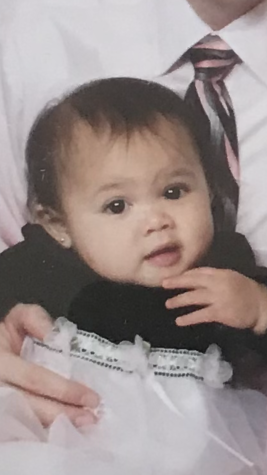
Andrea “AJ” Gordon is a senior at Watkins Mill High School and Opinion Managing Editor for The Current. She is an IB Diploma student and is a part...



